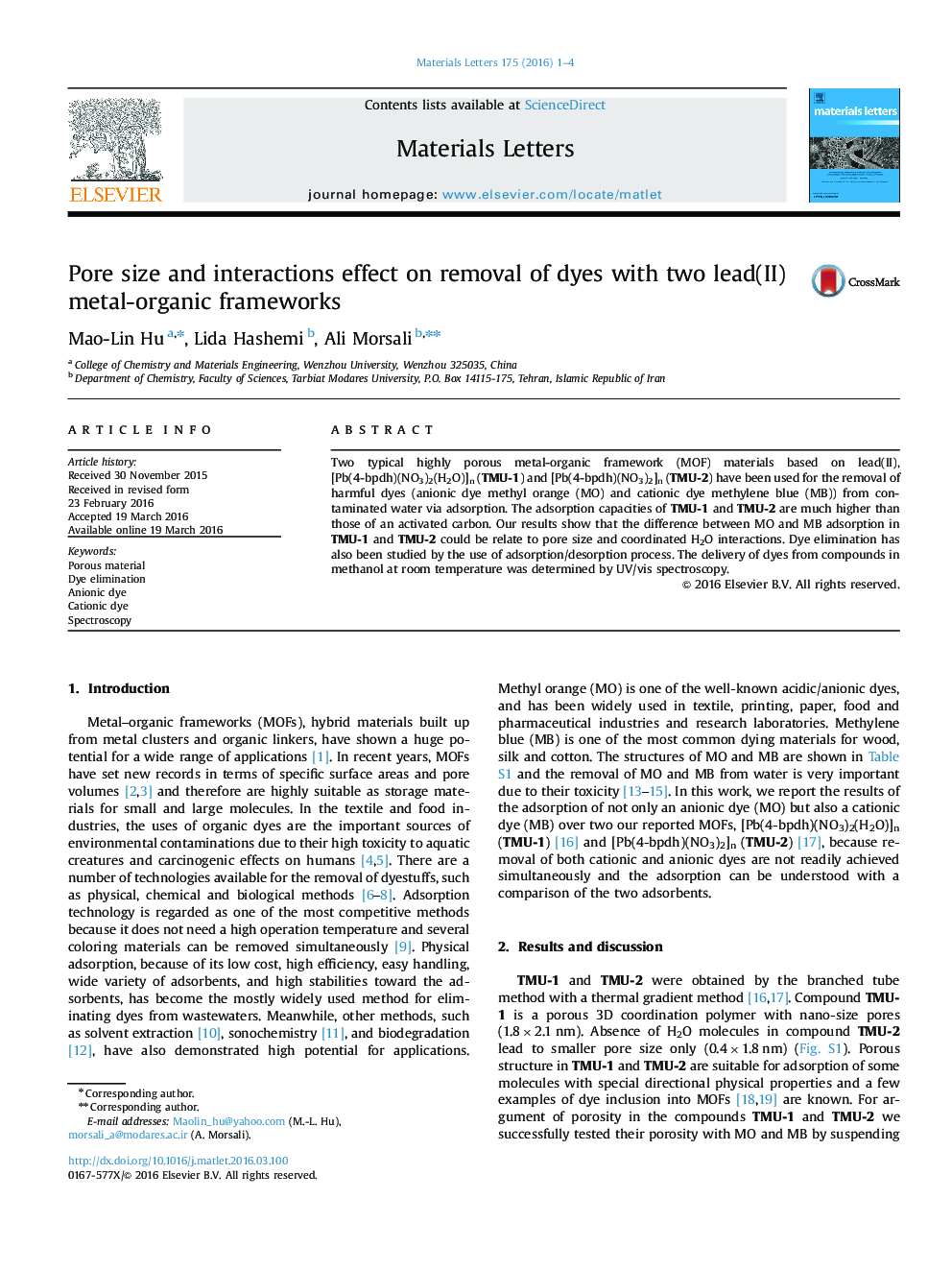| Article ID | Journal | Published Year | Pages | File Type |
|---|---|---|---|---|
| 1641235 | Materials Letters | 2016 | 4 Pages |
•Stable MOFs (TMU-1) and (TMU-2) with rigid empty pores have been used for the removal of harmful dyes.•The adsorption capacities of TMU-1 and TMU-2 are much higher than those of an activated carbon.•Difference between MO and MB adsorption in TMU-1 and TMU-2 could be relate to pore size and coordinated H2O interactions.•Dye elimination rate conforms from this relation: MO@TMU-2>MB@TMU-2>MB@TMU-1>MO@TMU-1.
Two typical highly porous metal-organic framework (MOF) materials based on lead(II), [Pb(4-bpdh)(NO3)2(H2O)]n (TMU-1) and [Pb(4-bpdh)(NO3)2]n (TMU-2) have been used for the removal of harmful dyes (anionic dye methyl orange (MO) and cationic dye methylene blue (MB)) from contaminated water via adsorption. The adsorption capacities of TMU-1 and TMU-2 are much higher than those of an activated carbon. Our results show that the difference between MO and MB adsorption in TMU-1 and TMU-2 could be relate to pore size and coordinated H2O interactions. Dye elimination has also been studied by the use of adsorption/desorption process. The delivery of dyes from compounds in methanol at room temperature was determined by UV/vis spectroscopy.
